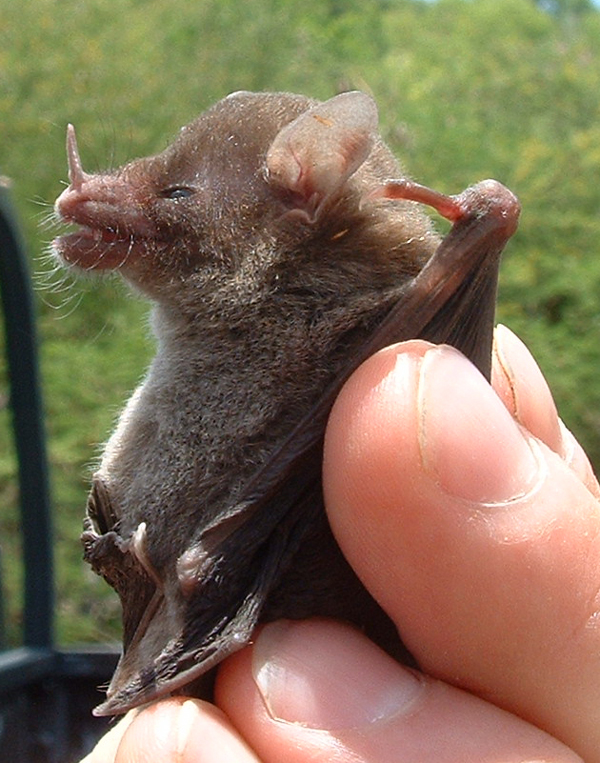Guide to the bats of Montserrat
Artibeus jamaicensis Chiroderma improvisum Brachyphylla cavernarum Noctilio leporinus Ardops nichollsi Sturnira thomasi Monophyllus plethodon Molossus molossus Tadarida brasiliensis Natalus stramineus Key to Roosts Key to Taxa
(Photo A. Hartpence)
(Photo M. Morton)Long-Tongued Bat - Monophyllus plethodon
STATUS: Common throughout the region (Puerto Rico and the Lesser Antilles) and commonly netted in moist ravines and fruit plantations.
IDENTIFICATION: This species has a small heart-shaped noseleaf and a very elongate snout and tongue. Like all glossophagine bats, the tongue has small bristles a the end which help the bat to lap up nectar from the depths of a flower's corolla. These bats have an interesting series of bristle-like whickers that surround the end of their muzzle which are very sensitive. These bristles help the bat correctly position its snout within flowers when is drinking. Long-tongued bats have a short stumpy tail that projects beyond the narrow tail membrane that is attached along the inner surface of the back legs.
ROOSTS: These bats are known to share cave roosts with other bat species and may be overlooked when roosting in small numbers. If they share a roost, they will roost separately from other species of bat, typically preferring smaller, moist pockets where they canhang freely from the ceiling of the roost/cave.
DIET: Though they function as nocturnal humming birds (nectar rewards for pollination duties) they eat small fruits - Piper plants are a distinct favorite. Long-tongued bats have also been observed hawking insects and may rely heavily on insects during periods of draught when flowers and small fruits either dry up or do not develop fully.
REPRODUCTION: Very little reproductive data exists for this bat. Pregnant Long-tongued bats have been observed in January, March, April, and July, and lactating females have been noted during May, July, and August.
SIZE: Forearm length - 41mm (range 38-46mm); Mass - 15g (range 12-17g); Wingspan - approx. 300mm; Head+body length - 60-70mm.
REFERENCE: Mammalian Species No. 58: Monophyllus plethodon by Jacqueline A. Homan & J. Knox Jones, Jr. 2pp (American Society of Mammalogists, 1975)
See Entry: Walker's Mammals of the World Online version 5.1, by Ronald Nowak, 1997


